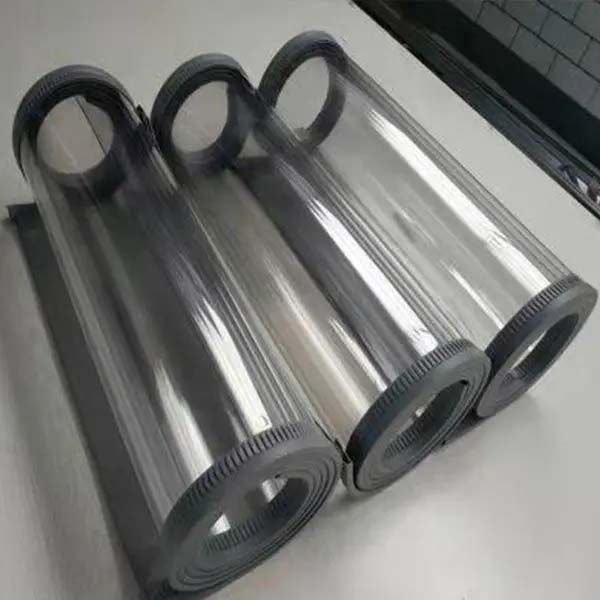Exploring the Versatility and Applications of Flexible PVC Materials in Various Industries
Understanding Flexible PVC Properties, Uses, and Benefits
Flexible polyvinyl chloride, commonly known as flexible PVC, is one of the most versatile materials used in various industries today. Its distinct properties make it an ideal choice for numerous applications, ranging from construction to consumer goods. This article will explore the characteristics of flexible PVC, its applications, benefits, and its environmental impact.
What is Flexible PVC?
Flexible PVC is a type of plastic polymer that combines the properties of traditional PVC with added flexibility and softness. This is achieved by incorporating plasticizers—substances that enhance the material's flexibility and workability. The result is a material that can be bent, molded, and shaped without losing its structural integrity. Flexible PVC typically contains about 20-30% plasticizers, which can be adjusted depending on the desired flexibility and hardness of the final product.
Properties of Flexible PVC
1. Flexibility As the name suggests, flexibility is one of the primary characteristics of flexible PVC. This feature allows it to be used in applications that require bending and stretching without breaking.
2. Durability Flexible PVC is resistant to impact, abrasion, and oxidation, providing a long lifespan and making it suitable for both indoor and outdoor applications.
3. Chemical Resistance This material is resistant to many chemicals and environmental factors, including moisture, solvents, and certain acids, which makes it ideal for applications in harsh conditions.
4. Lightweight Flexible PVC is relatively lightweight compared to other materials like metals or glass, making it easier to handle and transport.
5. Cost-Effective Flexible PVC is generally more affordable than alternatives like rubber or silicone, making it an attractive option for manufacturers aiming to control costs.
6. Ease of Fabrication It can be easily extruded, molded, and processed, allowing manufacturers to create a wide range of shapes and designs.
Applications of Flexible PVC
Flexible PVC finds applications in various fields, including
- Construction It is used in plumbing (pipes, fittings), electrical insulation, flooring, and as a component in windows and doors due to its weather resistance and durability.
flexible pvc

- Automotive In the automotive industry, flexible PVC is employed for interior trims, dashboards, and protective covers due to its lightweight and aesthetic appeal.
- Medical Flexible PVC is commonly found in medical devices, including IV bags, tubing, and containers. Its ability to be sterilized and its compatibility with medical applications make it a popular choice.
- Consumer Products Many household products, such as toys, inflatable items, and raincoats, are made from flexible PVC. Its durability and water resistance suit these products well.
- Packaging Flexible PVC is widely used in packaging materials, especially in shrink wraps and blister packs, because of its clarity and strength.
Benefits of Using Flexible PVC
Flexible PVC has several advantages that make it a favored choice in numerous industries
- Versatility Due to its adaptability, flexible PVC can be engineered to meet specific requirements, leading to its widespread use in diverse applications.
- Customization Manufacturers can customize its properties by adjusting the type and amount of plasticizers used, allowing for specific hardness and flexibility levels.
- Recyclability Flexible PVC can be recycled, contributing to a reduction in environmental waste when processed correctly.
- Safety It can be formulated to be non-toxic and free from harmful additives, making it safer for consumer and medical products.
Environmental Considerations
While flexible PVC has numerous benefits, its production and disposal raise environmental concerns. Traditional PVC is derived from fossil fuels, leading to environmental pollution during manufacturing. Moreover, the release of harmful chemicals during its lifecycle can pose risks to health and the environment. Fortunately, advancements in recycling technologies and the development of bio-based plasticizers are helping to mitigate some of these issues.
Conclusion
Flexible PVC is an essential material in today’s economy, offering flexibility, durability, and cost-effectiveness across various applications. As industries evolve, flexible PVC continues to adapt and address challenges, balancing its benefits with environmental stewardship. Understanding its properties and uses can help consumers and manufacturers make informed decisions about its application in their respective fields.
-
Flexible PVC Sheet Supplier – Durable Flexible Plastic & Ribbed Sheets Custom SolutionsNewsJun.10,2025
-
Magnetic Curtain Wide – Durable, Easy Install, Perfect Fit for DoorsNewsJun.10,2025
-
Flat Anti-Insect PVC Strip Curtain Effective Insect Control SolutionNewsJun.10,2025
-
Opaque PVC Strip Curtains Insect-Proof & Privacy SolutionsNewsMay.30,2025
-
3mm PVC Sheets - Durable, Lightweight & Waterproof 1mm & Rolls AvailableNewsMay.30,2025
-
Polar Curtains Energy-Efficient Thermal Insulation Solutions Shop NowNewsMay.29,2025



